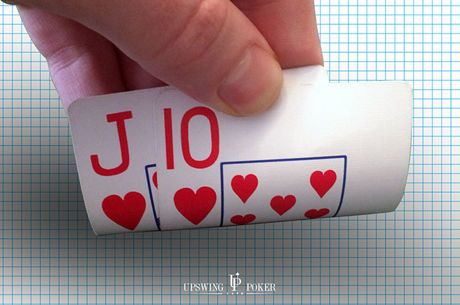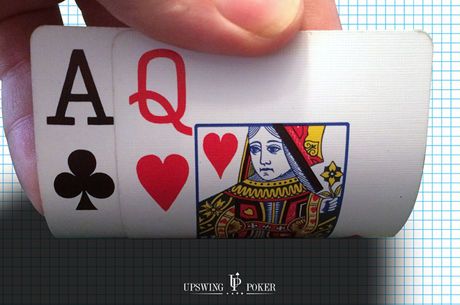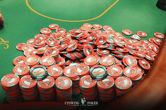How to Play Ace-Ten Suited in Cash Games (Pre-Flop & Post-Flop)
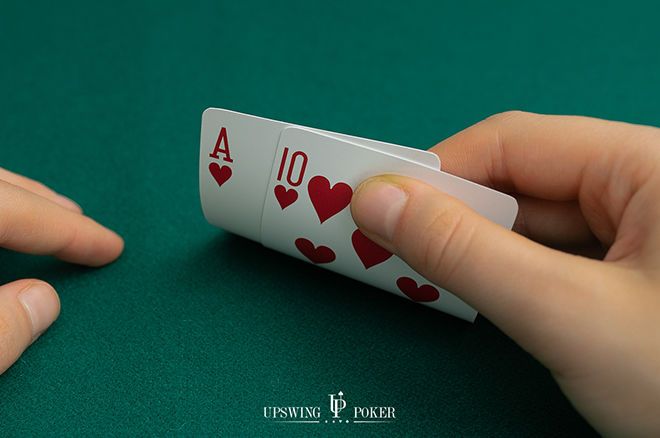
Table Of Contents
What goes through your mind when you look down at Ace-Ten suited?
Some people love it, some people hate it, but there's no doubt that Ace-Ten suited can be a very profitable hand if you play it well.
In this article, I will be covering how to play it in various preflop situations and also how to approach different postflop situations.
Let��s dive in!
Preflop
Let��s begin by getting our preflop strategy down:
Unopened pots
Ace-Ten suited is a strong hand, ranking in about the top 12% of preflop hands. Because of this, you should open-raise it from any position.
Against an open-raise
In most scenarios, Ace-Ten suited can be played as a 3-bet or call when you are in position against a player who has open-raised.
The only situations in which you may want to do a bit of folding with Ace-Ten suited is when the open-raiser is in the earliest positions (UTG or UTG+1). In these spots, you can raise, call, or fold �� all three options are close �� unless you��re on the button, in which case you should call or 3-bet (don��t fold).
Here are the table positions for your reference:
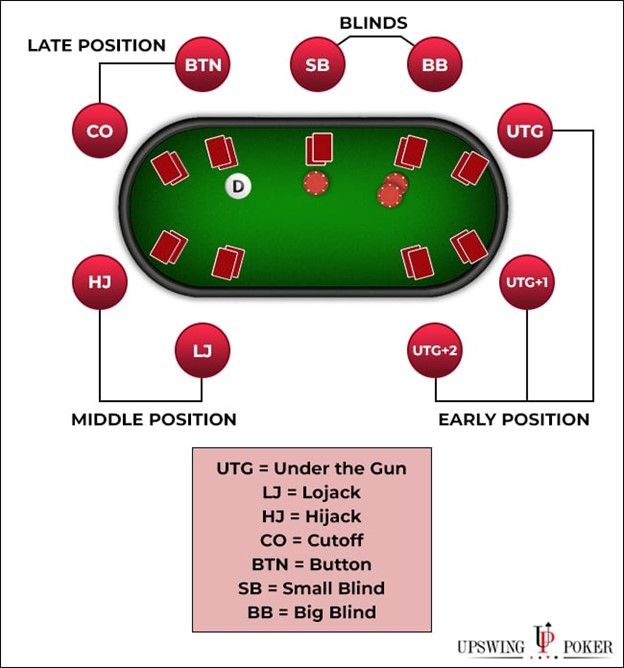
When playing from the Small Blind, you will want to always 3-bet with this hand.
When playing from the Big Blind, the hand is often a mixed strategy against different open-raises from different positions. I suggest you 3-bet with it rather than call, but it��s really up to you to decide.
In all unmentioned scenarios, Ace-Ten suited can either be played as a call or 3-bet.
Against a 3-bet
When you open and face a 3-bet, you have several options: calling, 4-betting, and folding are all close in EV regardless of your position.
The only positions in which it��s a clear cut continue against a well-built 3-betting range are:
- From the Cutoff against an open from the Button, Small Blind, or Big Blind
- As the Button against a 3-bet from one of the blinds
How often you want to 4-bet bluff with this hand depends on the 3-betting frequency of your opponent. The lower it is, the less you want to bluff as his range is stronger and less likely to fold.
Further reading: What Top Poker Pros Already Know About 4-Betting
Against a 4-bet
I would advise most of you to straight-up fold this hand every time you face a 4-bet. Especially when playing live, there are very few situations that warrant continuing with this hand. Most players do NOT have a balanced 4-betting range.
Note: Want to know how to play every hand in every common preflop situation? Get instant access to extensive preflop charts and lessons (for cash games, heads-up and tournaments) when you join the Upswing Lab training course. Lock your seat now!
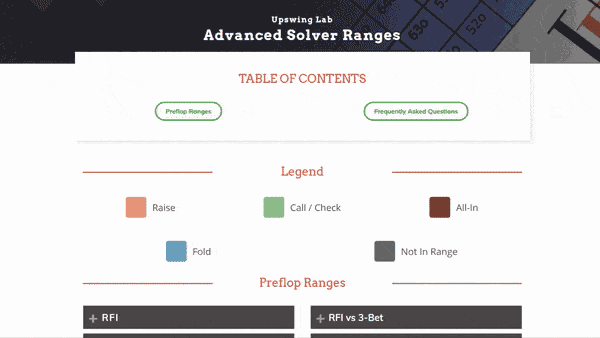
3 Tips for When You Hit the Flop with Ace-Ten Suited
Tip #1: When you are out of position as the preflop raiser in a single raised pot (blind vs blind) and the board is Ten-high and connected, you should consider checking with your top pair.
With this tip, I'm talking about situations in which you open-raise in the small blind, get called by the big blind, and the flop comes something like:
- A?10? on 10?9?8?
- A?10? on 10?7?6?
These boards favor the player who has the positional advantage for a couple of reasons:
- While the equity distribution is very close to 50/50, the big blind has the strategic advantage by always being the last to act. This enables him to realize his equity much better compared to his opponent.
- The high stack-to-pot ratio, which exacerbates the equity realization advantage for your opponent in the big blind.
For these reasons, you should play passively with your top pair at least some of the time to protect the many marginal and weak hands in your range.
Tip #2: Almost always bet when you hit top pair in position.
On almost every board, you will have a range advantage in position as the preflop raiser.
Your top pair (regardless of it being the Ace or the Ten) will almost always be strong enough to bet for value on the flop. It will also usually be strong enough to double barrel on the turn for value as part of a polarized strategy.
Example flops:
- A?10? on A?8?4?
- A?10? on 10?9?2?
Tip #3: Almost always bet when you hit middle pair on the flop in position.
These strong middle pairs play pretty well as a continuation bet (c-bet) on the flop.
This is due to it being the strongest second pair possible, and thus it benefits from getting value and equity denial. This also allows you to have trips in your range should the turn come another ten, making your overall strategy more robust.
Examples:
- A?10? on Q?10?3?
- A?10? on J?10?5?
3 Tips for Playing When You Miss the Flop with Ace-Ten Suited
Tip #1: Always bet when you hit a draw in position
You should usually c-bet your draws (to a flush and/or straight) on the flop because they have a decent chance to improve to the best hand by the river and win a big pot. It also balances out your c-betting range, making you harder to play against.
Examples:
- A?10? on J?7?2?
- A?10? on K?Q?9?
Tip #2: Always bet when you have a double backdoor draw in position on the flop
This tip goes hand in hand with tip #1. Hands with both a backdoor flush and straight draw work as a balancing factor not only on the flop, but also on draw-completing turns on which you��d otherwise be left without sufficient bluffs.
Examples:
- A?10? on Q?9?7?
- A?10? on J?8?6?
Tip #3: Always check back when you don��t have a draw or backdoor flush draw in single raised pots
The best bluffing hands tend to be those that actually have a decent chance to become the best hand by the river. When you don��t have at least some backdoors to go with your A-high, unless the board is paired*, you��ll want to just check back with Ace-Ten suited and try to steer the hand to showdown.
*Paired boards should oftentimes still be c-bet frequently
Examples:
- A?10? on 7?6?4?
- A?10? on 9?6?5?
Wrapping Up
There you have it: a quick guide to playing Ace-Ten suited in a variety of preflop and postflop situations.
How do you feel when you look down at Ace-Ten suited? Leave a comment below to let me know.
For more advice on how to play specific hands, check out how to play:
Until next time, good luck at the tables!
Note: Ready to join 6,000+ players currently upgrading their No Limit Hold��em skills? Crush your competition with the expert strategies you will learn inside the Upswing Lab training course. Learn more now!
Sponsor-generated content by Upswing Poker

